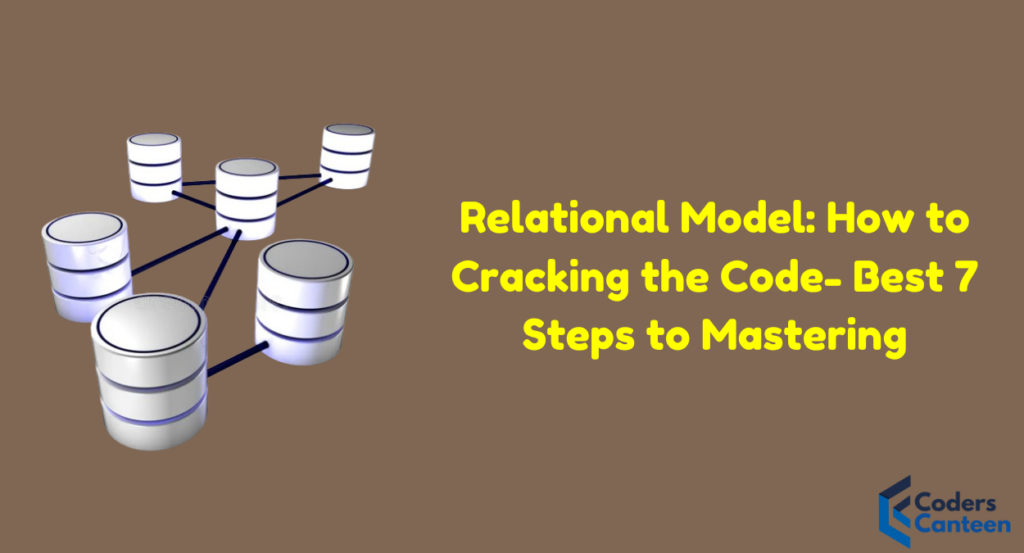Are you tired of feeling like you need a secret decoder ring to understand databases? Do terms like “relational model” and “SQL” make your head spin faster than a malfunctioning hard drive? Fear not, dear reader, for you are about to embark on a journey that will demystify the complexities of database management once and for all. In this comprehensive guide, we will walk through the fundamentals of the relational model, breaking down its concepts into bite-sized pieces that even your grandmother could understand. So buckle up, grab a cup of coffee, and let’s dive into the magical world of database management!

Step 1: The Database Dilemma
Before we can unravel the mysteries of the relational model, we must first understand the problem it aims to solve. Picture this: you’re drowning in a sea of data, with files scattered across your computer like socks in a teenager’s bedroom. Sound familiar? That’s where databases come in. Think of them as your digital butler, organizing your data with the precision of a neurosurgeon and retrieving it at the speed of light.
Step 2: Enter the Relational Model
Now that we’ve established the need for databases, let’s talk about the relational model. Don’t let the fancy terminology intimidate you – at its core, the relational model is all about relationships. No, not the romantic kind (although who knows, maybe databases have a love life too), but rather the connections between different pieces of data. Imagine your data as a giant family reunion, with each table representing a different branch of the family tree. By establishing relationships between these tables, we can paint a complete picture of our data landscape, from Aunt Sally’s potato salad recipe to Uncle Bob’s embarrassing dance moves.
Step 3: Getting to Know SQL (Sassy Query Language)
Ah, SQL – the language of databases. If the relational model is the heart of database management, then SQL is the beating pulse that keeps it alive. But fear not, for SQL is not as intimidating as it sounds. In fact, it’s downright sassy! With just a few simple commands, you can create, read, update, and delete data with the finesse of a master chef slicing through a ripe tomato. So go ahead, unleash your inner SQL ninja and start querying like there’s no tomorrow!
Step 4: Normalization Nation
One of the key principles of the relational model is normalization, which is just a fancy way of saying “keeping your data tidy.” Think of it like Marie Kondo-ing your database – if it doesn’t spark joy (or serve a useful purpose), it’s time to say goodbye. By organizing your data into logical groupings and minimizing redundancy, you can ensure that your database runs like a well-oiled machine, with no pesky duplicates cluttering up the works.
Step 5: Indexing 101
If normalization is the Marie Kondo of database management, then indexing is the GPS navigation system – it helps you find what you’re looking for in the blink of an eye. By creating indexes on your tables, you can speed up data retrieval and optimize performance, ensuring that your database runs smoother than a baby’s bottom. Just be careful not to overdo it – too many indexes can slow down your database faster than rush hour traffic on a Friday afternoon.
Step 6: Backing Up Your Data (Because Stuff Happens)
Ah, the dreaded B-word – backup. Nobody likes to think about it, but accidents happen, hard drives fail, and sometimes your data decides to go on an extended vacation without leaving a forwarding address. That’s why it’s crucial to regularly back up your data, ensuring that you have a safety net in case disaster strikes. So do yourself a favor and schedule regular backups – your future self will thank you!
Step 7: Scaling for Success
Last but not least, let’s talk about scaling. As your database grows and evolves, you’ll inevitably encounter the need to scale up (or out) to accommodate increasing demands. Whether you’re adding more servers to handle the load or optimizing your code for maximum efficiency, scaling is an essential part of database management. So don’t be afraid to think big – after all, the sky’s the limit when it comes to data!
Must Read:
- Unveiling the Singular Dimensional Array: A Profound Exploration into the Essence of Simplicity in Programming
- The Ultimate Guide to Mastering Windows Updates on Your PC: 7 Steps to Boost Performance and Security
FAQs About Relational Model
Q: Do I need a degree in computer science to understand the relational model?
A: Not at all! While a basic understanding of computer science principles can certainly help, anyone with a curious mind and a willingness to learn can grasp the concepts of the relational model.
Q: How can I learn SQL?
A: There are plenty of resources available online, from tutorials to interactive courses, that can help you master the basics of SQL. And don’t forget to practice – the more you query, the better you’ll get!
Q: What’s the deal with normalization?
A: Normalization is all about organizing your data in a logical and efficient manner, minimizing redundancy and maximizing efficiency. Think of it like tidying up your database – the cleaner it is, the easier it is to find what you’re looking for.
Conclusion
Congratulations, dear reader, you have officially graduated from Database Management 101! Armed with your newfound knowledge of the relational model, SQL, and all things database-related, you are now ready to conquer the digital world with confidence and panache. So go forth, brave adventurer, and may your data always be well-organized and your queries lightning-fast. And remember, the next time you find yourself lost in the labyrinth of database management, just refer back to this handy guide for a bit of guidance and a dash of humor. Happy querying!